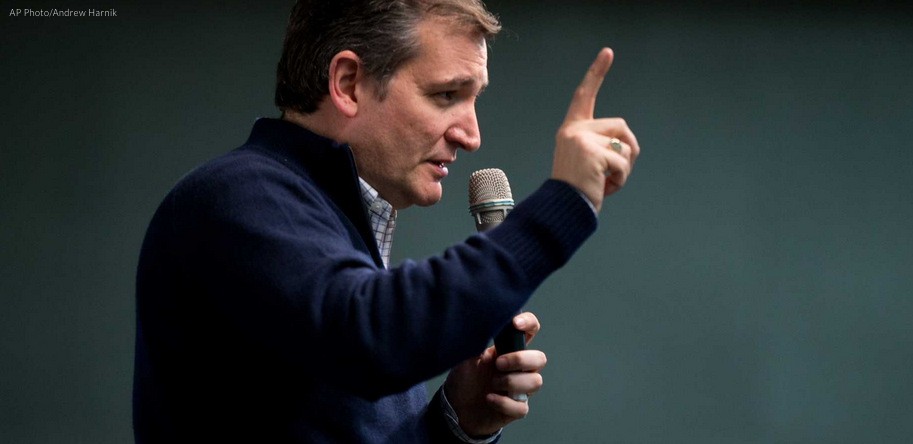The media have decided that Senator Marco Rubio (R-FL) was last night’s big winner in the Iowa caucuses. Rubio finished a strong third in Iowa, outperforming the RealClearPolitics poll average by 6.2 percent. Rubio himself spoke as though he had wrapped up the nomination with his finish. And meanwhile, donors are rapidly shifting from Jeb! to Rubio, according to the latest reports.
Nonetheless, last night’s big winner was Senator Ted Cruz (R-TX). His campaign had the most to lose and the most to win.
Cruz’s Challenges. Cruz had to overcome the 800-lb. gorilla in the room, Donald Trump. Trump was widely perceived as the frontrunner not just in Iowa but for the nomination; he’d spent weeks blasting Cruz not just as a “liar” but as a Canadian-born imposter in thrall to Wall Street. Trump’s attacks on Cruz dominated the media coverage; in the days before the caucuses, the media focused heavily on Cruz’s campaign tactics as well, attempting to label them corrupt. And Cruz’s poll numbers had dropped steadily as a result. Even as Trump turned his cannons on Cruz, Cruz maintained his anti-ethanol stance – the most dangerous political stance a candidate can take in Iowa. The governor of Iowa, Terry Branstad, essentially condemned Cruz for failing to back the corn boondoggle.
And then Cruz won.
The Cruz Campaign Going Forward. This is a durable campaign with a great data machine and an excellent get out the vote effort. They proved that last night in Iowa. Cruz’s campaign has raised more money than any other candidate. Cruz raised the $20.5 million in the last quarter of 2015. And Cruz super PACs are flush with cash.
The nomination requires 1,237 delegates. A heavy percentage of those delegates are located in blue states – states more unfriendly to Cruz’s message than Rubio’s.
So here’s the road for Cruz to the nomination.
He needs to finish in the top three in New Hampshire, which is probable at this point. Then he needs to move forward and win South Carolina. From there, he needs to clean up with purple states.
Approximately 1037 delegates come from heavy red states that should favor Cruz, but just 115 of those delegates are apportioned based on a winner-take-all system. 531 delegates come from district-by-district apportioned systems; 309 come from proportional representation states. Cruz should win these states overwhelmingly; if he does, his ceiling could be approximately 800 delegates.
In the purple states, 162 delegates come from winner-take-all systems; another 116 come from proportional representation states, and 46 come from district-by-district selections. Cruz has already won Iowa. The other states include Nevada, Florida, New Hampshire, Ohio, North Carolina, and Virginia – and Rubio’s competitive in Florida, Nevada, New Hampshire, and Ohio. Assuming best-case outcome, Cruz walks away with just over 100 delegates.
Which brings us to the blue states. There are 778 delegates to be allocated in these states. Cruz would have to win just over 200 of them. That’s doable, if difficult – Cruz probably needs to win California in order to take that many delegates overall.
Cruz is well-positioned here, assuming that Donald Trump begins to fade after New Hampshire in favor of Cruz; if Trump doesn’t, Cruz could still face trouble before we hit the late-breaking blue states that cut in favor of Rubio and Trump. Of course, if Trump stays in the race, he could prevent Rubio from winning delegates in the late states, too – he’s more likely to challenge Rubio in Florida and New York, for example, than Cruz in Texas.
If Trump wins victories, we could actually be looking at a brokered convention. But at this point, you’d have to assume that Cruz is the frontrunner.
Source: Ben Shapiro, http://www.dailywire.com
 Listen Online
Listen Online Watch Online
Watch Online Find a Station in Your Area
Find a Station in Your Area









 Listen Now
Listen Now Watch Online
Watch Online
